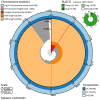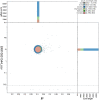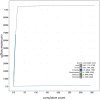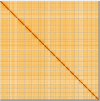The genome sequence of the common earthworm, Lumbricus terrestris (Linnaeus, 1758)
- PMID: 38249959
- PMCID: PMC10799228
- DOI: 10.12688/wellcomeopenres.20178.1
The genome sequence of the common earthworm, Lumbricus terrestris (Linnaeus, 1758)
Abstract
We present a genome assembly from an individual Lumbricus terrestris (the common earthworm; Annelida; Clitellata; Haplotaxida; Lumbricidae). The genome sequence is 1,056.5 megabases in span. Most of the assembly is scaffolded into 18 chromosomal pseudomolecules. The mitochondrial genome has also been assembled and is 15.93 kilobases in length.
Keywords: Haplotaxida; Lumbricus terrestris; chromosomal; common earthworm; genome sequence.
Copyright: © 2023 Blaxter ML et al.
Conflict of interest statement
No competing interests were disclosed.
Figures





Similar articles
-
The genome sequence of the red compost earthworm, Lumbricus rubellus (Hoffmeister, 1843).Wellcome Open Res. 2023 Aug 18;8:354. doi: 10.12688/wellcomeopenres.19834.1. eCollection 2023. Wellcome Open Res. 2023. PMID: 38618197 Free PMC article.
-
The genome sequence of the Brown Litter Worm, Bimastos eiseni (Levinsen, 1884).Wellcome Open Res. 2024 May 20;9:279. doi: 10.12688/wellcomeopenres.21622.1. eCollection 2024. Wellcome Open Res. 2024. PMID: 39296368 Free PMC article.
-
The genome sequence of the fish leech, Piscicola geometra (Linnaeus, 1761).Wellcome Open Res. 2023 May 26;8:229. doi: 10.12688/wellcomeopenres.19488.1. eCollection 2023. Wellcome Open Res. 2023. PMID: 38813549 Free PMC article.
-
The genome sequence of the mottled worm, Allolobophora icterica (formerly Aporrectodea icterica ) (Savigny, 1826).Wellcome Open Res. 2024 Sep 26;9:556. doi: 10.12688/wellcomeopenres.23066.1. eCollection 2024. Wellcome Open Res. 2024. PMID: 39494197 Free PMC article.
-
The genome sequence of a segmented worm, Terebella lapidaria Linnaeus, 1767.Wellcome Open Res. 2024 Aug 7;9:432. doi: 10.12688/wellcomeopenres.22823.1. eCollection 2024. Wellcome Open Res. 2024. PMID: 39221441 Free PMC article.
Cited by
-
The high-quality telomere-to-telomere genome assembly of the earthworm (Amynthas aspergillum).Sci Data. 2025 Jun 2;12(1):931. doi: 10.1038/s41597-025-05058-w. Sci Data. 2025. PMID: 40456754 Free PMC article.
-
Annelid Comparative Genomics and the Evolution of Massive Lineage-Specific Genome Rearrangement in Bilaterians.Mol Biol Evol. 2024 Sep 4;41(9):msae172. doi: 10.1093/molbev/msae172. Mol Biol Evol. 2024. PMID: 39141777 Free PMC article.
References
Grants and funding
LinkOut - more resources
Full Text Sources

